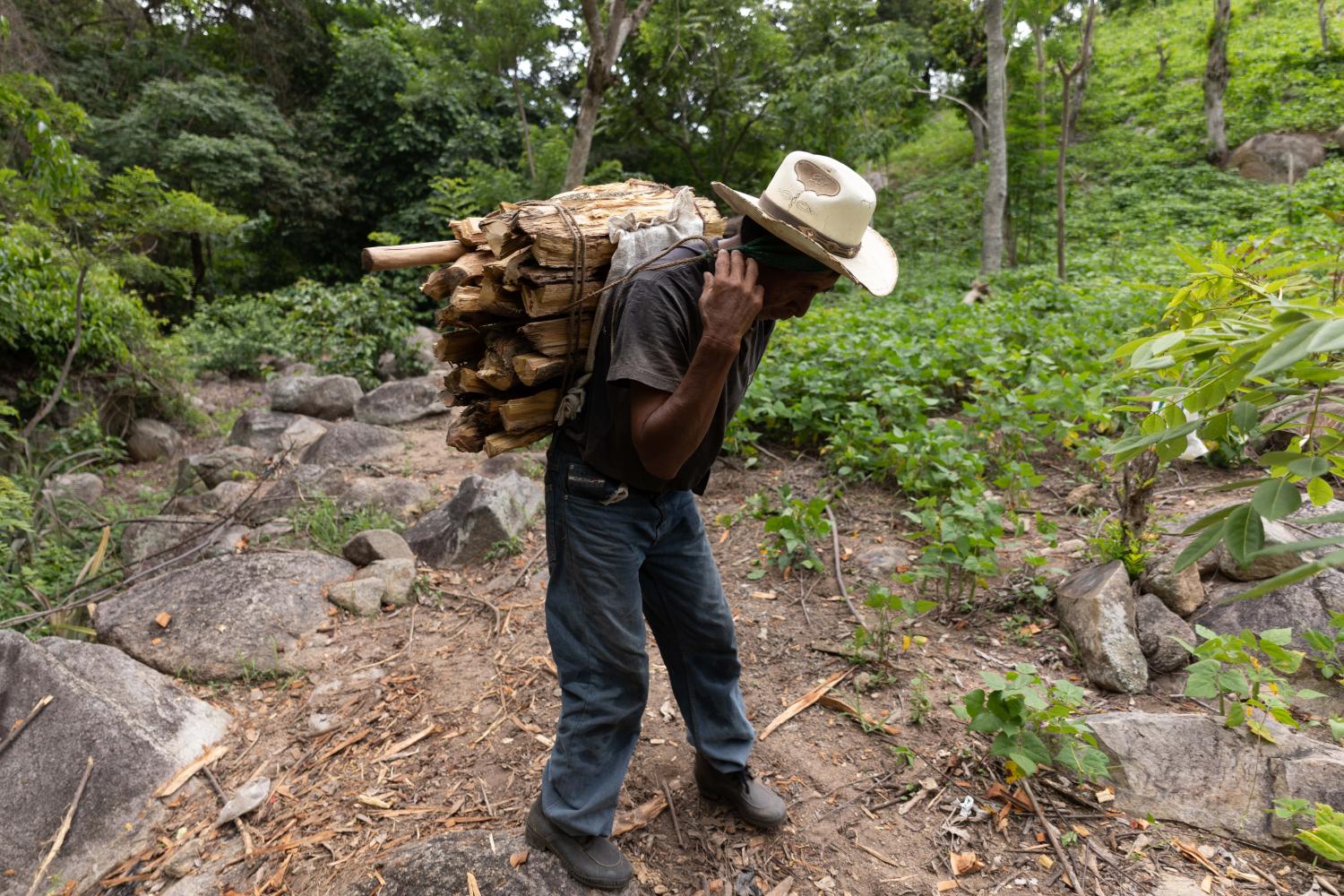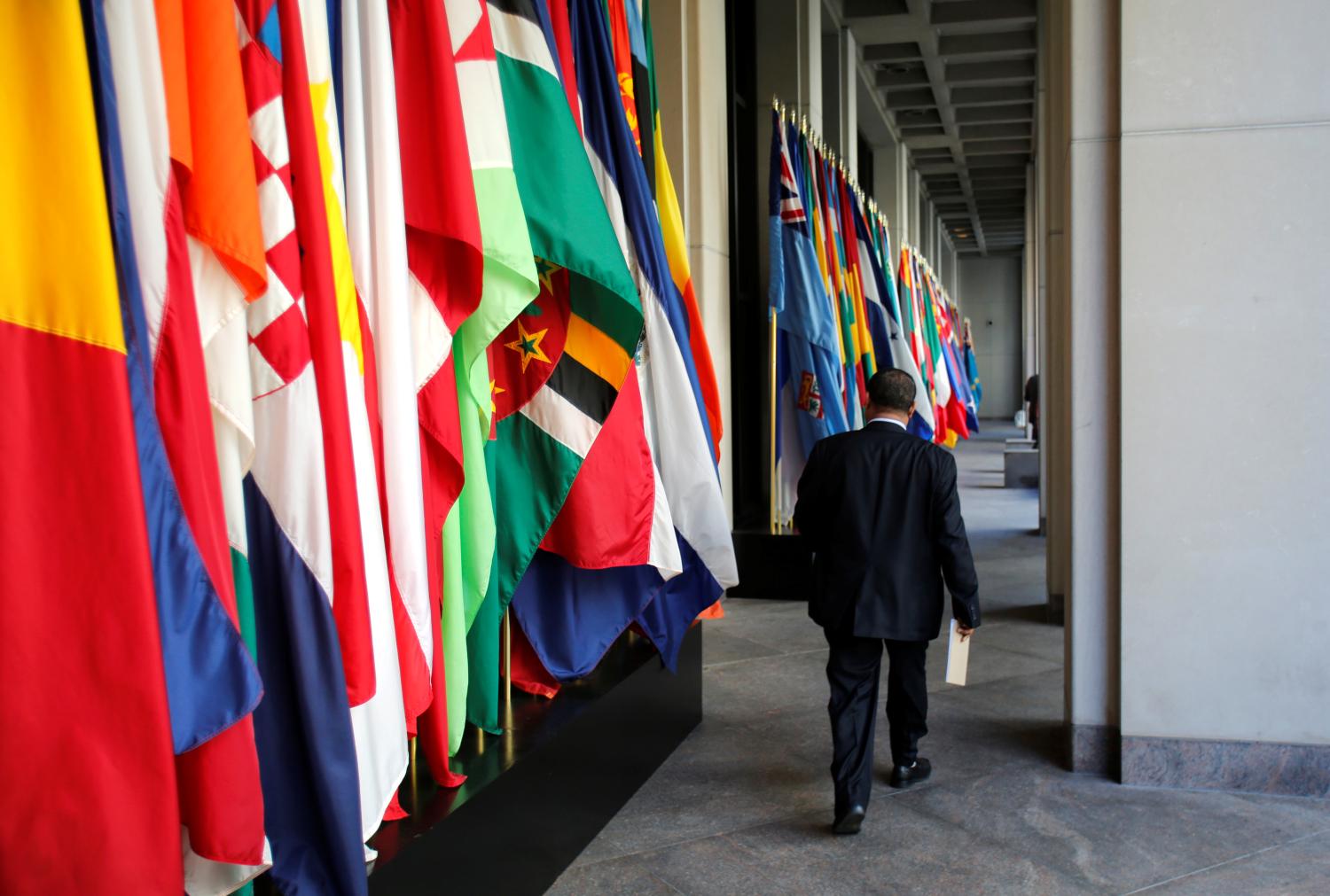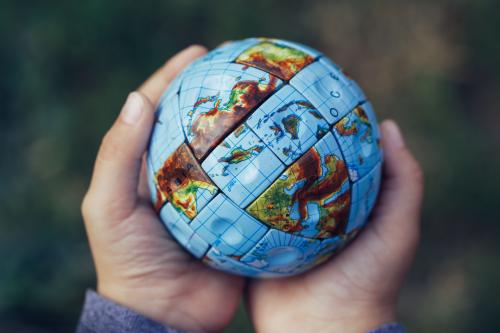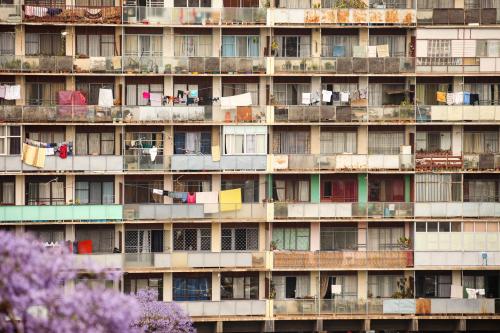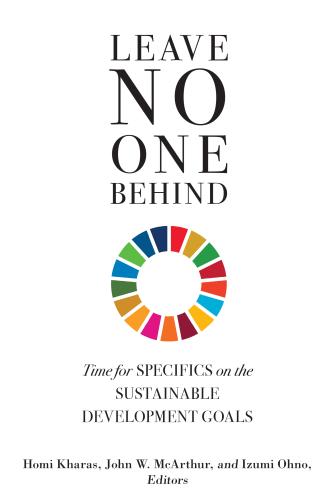1. Contours of a COVID-19 world
COVID-19 and the economic response have amplified and changed the nature of development challenges in fundamental ways. Global development cooperation should adapt accordingly. This paper lays out the urgency for new methods of development cooperation that can deliver resource transfers at scale, oriented to addressing climate change and with transparency and better governance. It looks at what is actually happening to major donor countries’ development cooperation programs, where the principal gaps lie, and offers some thoughts for how to move forward, notwithstanding the clear geopolitical rivalries that are evident.
The most immediate challenge is to provide a level of liquidity support to countries ravaged by the global economic downturn. This is the broadest and deepest downturn in the global economy that has ever been seen. The International Monetary Fund (IMF) projects a fall of 4.9 percent in global GDP in 2020, and a fall of similar magnitude in emerging market and developing countries (EMDEs) ex-China. The World Bank projects 93 percent of all countries in the world will go into recession in 2020. Many developing countries will see double-digit declines in GDP, with some recording downturns not seen in peacetime.
Alongside the short-term challenge of recovery, COVID-19 has laid bare longer-term trends that have pointed for some time to the lack of sustainability—environmental, social, and governance—in the way economic development was occurring in many places, including in advanced economies. The sharp reduction in productivity growth, the growing degree of inequality, the collapse of biodiversity, land degradation, ocean overfishing, and, of course, climate change all indicate the need for a reset of plans and priorities. This was already foretold in the negotiations leading to the adoption of the Sustainable Development Goals (SDGs) in 2015. However, what was agreed to then as a theoretical concept of an improved development pathway has now given way to a recognition that decisive change is now needed if countries are to avoid destabilizing forces.
This new landscape has significant implications for development cooperation in terms of scale, development/climate co-benefits, and transparency and accountability. First, our understanding of the scale of resources that could be made available has changed. There had already been a discourse about the increased needs to meet the SDGs (the “billions to trillions” discussion), but those were taken as aspirational rather than foundational, and often dismissed as impractical. COVID-19 has changed this, with $12 trillion quickly mobilized to address its impact within major economies. The IMF suggested that at least $2.5 trillion would be needed for EMDEs. The African Union has called for $100 billion per year for that continent for the next three years. Much higher levels of resource transfers to developing countries need now to be discussed in global policy circles than was the case before COVID-19.
Perhaps the most telling statistic lies in the distinct fiscal response to the crisis. Advanced economies have plans to raise fiscal deficits by 9 percentage points of GDP in 2020, and to add a further 11 percentage points of GDP to their gross public debt through loans and guarantees to keep their businesses afloat. In emerging markets, the equivalent numbers are 3 and 2 percentage points of GDP, while in low-income countries they are 1 percentage point and negligible support. These differences are not due to differential health or economic impacts of COVID-19 but are purely the consequence of access to financing. Advanced economy governments have the exorbitant privilege of borrowing in their own currencies, while developing countries cannot; they are dependent on access to official development cooperation and to global capital markets. Scaling-up finance for development has therefore moved to center stage in a with-COVID-19 world. Advanced economies are being pressured, including by their own civil societies in some cases, to use their exorbitant privilege to help others. Whether they will resist, as in the past, or try to accommodate to a certain degree, is key to the with-COVID-19 discussion on development finance.
Second, the big effort to link climate change and development cooperation, which was agreed to in the SDGs, also has significant implications for development cooperation. At the risk of a vast oversimplification, climate change mitigation, with its focus on new investments in sustainable power, transport, and buildings to transition to a low-carbon economy, requires a front-loaded agenda, in much the same way as the International Finance Facility for Immunization (IFFIm) provided front-loaded resources for vaccinations after its introduction in 2003-2004. Demographic and urbanization pressures require new infrastructure to be built now in the developing world. If done in a sustainable fashion, there is a chance to reduce carbon emissions thanks to the lock-in effects of sustainable infrastructure assets. But sustainable investments often cost more up-front, biasing liquidity-constrained countries to adopt least-cash solutions rather than least-cost solutions in their infrastructure choices. This must change.
In an additional complication, most infrastructure finance is debt finance, requiring long maturities and affordable rates. The with-COVID-19 world has already reduced creditworthiness of many developing countries, and every expectation is that the worst is still to come in 2021.
Third, if focus does shift to a sustained expansion in sustainable infrastructure, where developing country needs could amount to 5 percent of GDP, then governments and state-owned utilities in developing countries will have a much larger role. Most sustainable infrastructure, with the exception of power generation and information and communications technology (ICT) backbone infrastructure, is implemented by the public sector or public agencies. But there is no shared understanding as to the definition of sustainable development investment. Already there is a concern that the large volume of funds being mobilized to support the recovery effort cannot be adequately tracked. With weakening parliamentary and civil society oversight in some places, there is a need for more radical transparency and monitoring of development spending that would give comfort to people in recipient and donor countries alike that money is being wisely spent. This is not “conditionality,” something that donors have rightly been criticized for in their dealings with developing countries. It is a call for transparency; for finance to be sustainable and enjoy wide popular support, the links with expenditure and the development benefits that it brings about must be strengthened.
This paper looks at development cooperation through these three lenses of scale, links to climate change, and transparency and governance. One section briefly discusses recent trends in development cooperation, followed by a discussion of the emerging gaps. The final section offers some thoughts for opportunities to fill these gaps.
The Brookings Institution is committed to quality, independence, and impact.
We are supported by a diverse array of funders. In line with our values and policies, each Brookings publication represents the sole views of its author(s).

